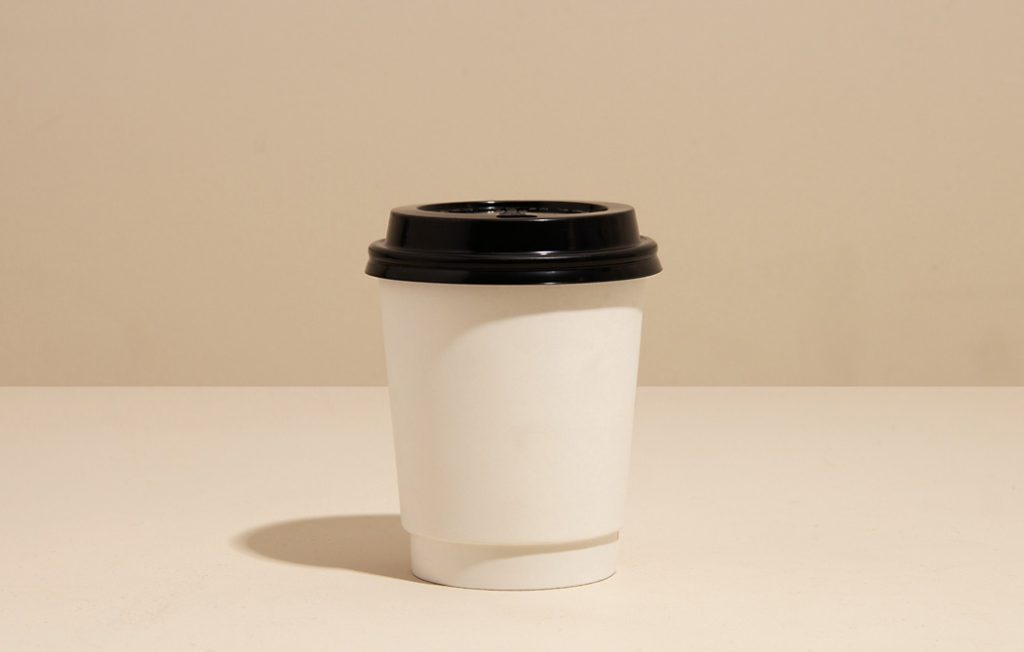
In recent years, corporations and small businesses alike have been changing their practices and adapting to a new wave of sustainability-minded customers. Paper straws, compostable coffee cups, and starch-based takeout boxes are becoming go-to solutions because consumers believe they are made without fossil fuels and decompose faster. I also believed these ideas to be true. Recent evidence, however, indicates that these assumptions—and many others we hold about plastic alternatives—are often false.
Compostable Plastic?
One of the most common alternatives for petroleum-based plastics is bioplastics. As the name suggests, they’re made from biological material such as plant sugars. But only a subset of bioplastics is designed for composting. One of these is polylactide (PLA), which is among the most widespread.
When you buy a beverage in a PLA cup, you may notice the words “compostable” on the lid. Generally, what is missing from this label are the words “only at commercial composting facilities.”
This illustrates the first issue with compostable bioplastics: if they are not disposed at a commercial composting operation, they will not reach high enough temperatures for timely decomposition. In a landfill, where most of these products end up, PLA performs about the same as petroleum-based plastic—taking hundreds of years to decompose and producing harmful microplastics in the process.
Composting at an effective scale is hard enough to manage, but even if it were possible with the few facilities that exist, PLA poses challenges in other parts of its life cycle.
Usage Is Key
To assess the environmental impact of a plastic product, it is important to consider how it performs over its useful life. Durable packaging materials are beneficial not just for a customer’s convenience, but also because they have a longer shelf life that reduces food waste and its resulting environmental consequences. Durability also increases the likelihood that packaging will be reused.
When it comes to durability, many compostable or paper-based options have shorter lifespans than petroleum-based counterparts, but this sometimes does not matter in single-use applications because of the brief duration of usage. Regardless, when deciding what materials are best to use environmentally, it depends on how the product is going to be used. A single plastic bag, for example, may have fewer environmental consequences than a paper bag if it is reused enough times.
What Science Says
But the issues with composting and durability are not the chief concerns for PLA. Two studies published in recent years* have concluded that PLA underperforms in many areas compared to the common propane-based plastic poly-propylene (PP). The reason? Producing PLA from corn or other types of biomass entails significant ecological costs.
To analyze environmental impacts, one study compared single-use PLA cups and PP cups, while the other compared PLA, paper, and PP straws. They found that while PLA requires less fossil fuel usage and performs better from a climate change standpoint, PLA products fare worse in most other categories, including:
- Ozone formation: the production of hazardous gasses and smog;
- Acidification: increasing acidity of waterways and soil, disrupting ecosystems;
- Particulate matter: airborne pollutants that can cause significant health complications and mortality risks globally;
- Eutrophication: the increase of compounds in bodies of water that cause rapid algae and plant growth, harming ecosystems and wildlife.
From these findings, the studies concluded that PP cups outperformed PLA cups from an environmental standpoint, and that PP straws outperformed PLA and paper straws in all categories except for marine plastic pollution.
No Silver Bullet
Unfortunately, the benefits of PLA, paper, and most types of compostable packaging are often outweighed by issues in other environmental impact categories. While PP products tend to perform better than PLA and paper, the main takeaway is not that PP is the solution or that PLA is always bad (it’s not). The use of PP or plastic alternatives may only be a bandage for a much larger underlying problem—the usage and production of single-use products in general. If we are to truly change our environmental impact, we must rethink packaging, and possess the willingness to explore closed-loop and circular-economy solutions that meet our needs sustainably. PP products could be helpful for the short term, and PLA is still preferable to other fossil-fuel based plastics like PET, but new community services that allow for reusability and sustainable corporate and consumer behavior will be the most environmentally advantageous solutions.
If you are in the dining industry and would like help navigating takeout options, reach out at terracycletown@gmail.com.
*Moretti, C. et al., 2021, Resources, Conservation and Recycling, and Angela G. & Yongshan W., Science of The Total Environment, 2022.
